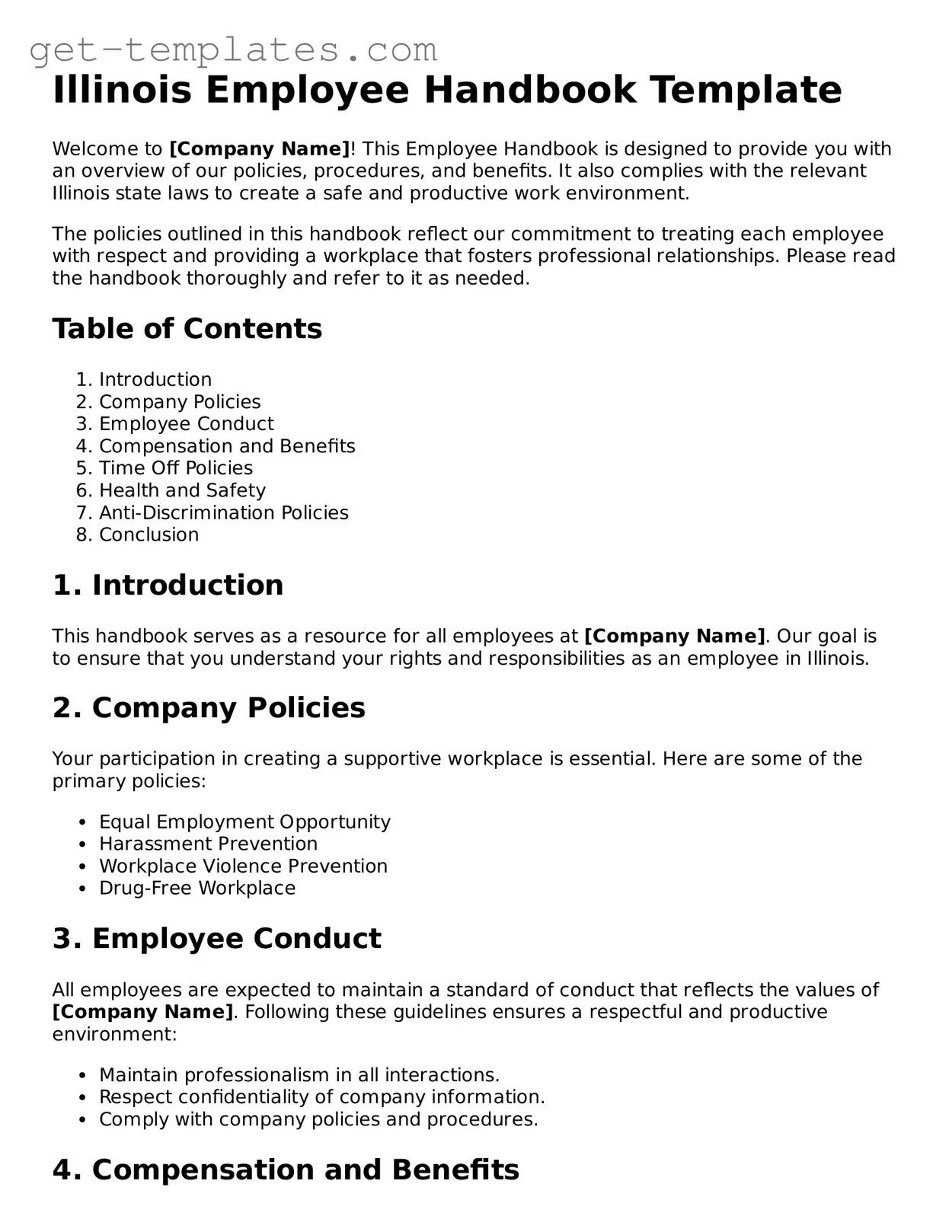Illinois Employee Handbook Template
Welcome to [Company Name]! This Employee Handbook is designed to provide you with an overview of our policies, procedures, and benefits. It also complies with the relevant Illinois state laws to create a safe and productive work environment.
The policies outlined in this handbook reflect our commitment to treating each employee with respect and providing a workplace that fosters professional relationships. Please read the handbook thoroughly and refer to it as needed.
Table of Contents
- Introduction
- Company Policies
- Employee Conduct
- Compensation and Benefits
- Time Off Policies
- Health and Safety
- Anti-Discrimination Policies
- Conclusion
1. Introduction
This handbook serves as a resource for all employees at [Company Name]. Our goal is to ensure that you understand your rights and responsibilities as an employee in Illinois.
2. Company Policies
Your participation in creating a supportive workplace is essential. Here are some of the primary policies:
- Equal Employment Opportunity
- Harassment Prevention
- Workplace Violence Prevention
- Drug-Free Workplace
3. Employee Conduct
All employees are expected to maintain a standard of conduct that reflects the values of [Company Name]. Following these guidelines ensures a respectful and productive environment:
- Maintain professionalism in all interactions.
- Respect confidentiality of company information.
- Comply with company policies and procedures.
4. Compensation and Benefits
At [Company Name], we acknowledge the importance of fair compensation and comprehensive benefits. Our offerings include:
- Competitive salary structures.
- Health insurance plans.
- Retirement savings options.
5. Time Off Policies
The company understands the necessity for work-life balance. We provide various time off policies, including:
- Paid time off (PTO).
- Sick leave.
- Family and Medical Leave Act (FMLA) leave as applicable.
6. Health and Safety
Your health and safety are our priorities. We adhere to state regulations and take proactive measures to maintain a safe work environment. This includes:
- Regular safety training.
- Emergency procedures.
- Health and wellness programs.
7. Anti-Discrimination Policies
[Company Name] is committed to ensuring an inclusive workplace. Discrimination based on race, gender, age, disability, or any other protected characteristics is prohibited.
8. Conclusion
This Employee Handbook serves as the foundation for a fulfilling employment experience at [Company Name]. If you have any questions or require further clarification regarding any policy, please reach out to your supervisor or the Human Resources department.
Thank you for being a part of our team!
